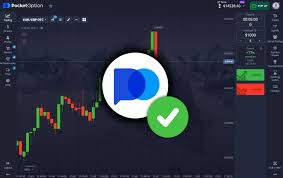Mastering Trading with Ichimoku Kinko Hyo for Better Market Strategies

Trading with Ichimoku Kinko Hyo: A Comprehensive Guide
Trading with Ichimoku Kinko Hyo is increasingly becoming popular among traders who seek a holistic view of market trends. This technical analysis tool provides a comprehensive framework for understanding price action and predicting future movements. In this article, we will take a deep dive into the components of the Ichimoku Kinko Hyo indicator, how to interpret it effectively, and some strategies that can enhance your trading performance. For practical insights, you can refer to Trading with Ichimoku Kinko Hyo in Pocket Option торговля с Ichimoku Kinko Hyo Pocket Option.
What is Ichimoku Kinko Hyo?
Ichimoku Kinko Hyo, often simply called Ichimoku, is a Japanese term that translates to “one glance equilibrium chart.” It was developed in the late 1930s by Goichi Hosoda, a Japanese journalist. The primary aim of this indicator is to provide a comprehensive view of market trends, potential support and resistance levels, and trading signals—all at a glance.
The Five Components of Ichimoku
Ichimoku Kinko Hyo consists of five main components, each serving a unique purpose:
- Tenkan-sen (Conversion Line): This is calculated as the average of the highest high and the lowest low over the last 9 periods. It represents short-term momentum.
- Kijun-sen (Base Line): This line is derived from the average of the highest high and the lowest low over the last 26 periods. It indicates medium-term momentum.
- Senko Span A (Leading Span A): This is the average of Tenkan-sen and Kijun-sen, plotted 26 periods into the future. It is one of the two lines that form the cloud.
- Senko Span B (Leading Span B): This is calculated as the average of the highest high and the lowest low over the last 52 periods, also plotted 26 periods ahead. Together with Senko Span A, they create the “Kumo,” or cloud.
- Chikou Span (Lagging Span): This line represents the closing price plotted 26 periods back. It helps identify bullish or bearish trends by comparing it to past price action.
Interpreting the Ichimoku Components
Understanding how to read the interactions between these components is crucial for effective trading:
- Cloud (Kumo) Analysis: The distance between Senko Span A and Senko Span B defines the thickness of the cloud. A thicker cloud often indicates stronger support or resistance. Bullish signals occur when the price is above the cloud, while bearish signals arise when the price is below it.
- Crossover Signals: When Tenkan-sen crosses above Kijun-sen, it generates a bullish signal, while the opposite crossover indicates a bearish signal.
- Trend Analysis: If the Chikou Span is above the price, it suggests a bullish market trend, while it being below indicates a bearish trend.
Strategies for Trading with Ichimoku Kinko Hyo
Incorporating Ichimoku Kinko Hyo into your trading strategy can significantly enhance your decision-making process. Here are some strategies that traders often use:

1. Trend Following Strategy
This is perhaps the most straightforward approach to using Ichimoku. A trader might only consider buying when the price is above the cloud and look for selling opportunities when the price is below the cloud. The ideal scenario is to wait for a confirmation from the Tenkan-sen and Kijun-sen cross.
2. Breakout Strategy
Traders can use Ichimoku to identify potential breakout points. When the price breaks above the cloud, it could signal a bullish breakout; conversely, a breakout below the cloud may suggest a bearish move. Entering trades at these breakout levels can lead to significant profits with controlled risk.
3. Kumo Twist Strategy
The Kumo Twist occurs when Senko Span A and Senko Span B switch positions. This can indicate a potential trend reversal. Traders closely monitor these events, as they often coincide with changes in market sentiment.
Common Mistakes to Avoid
While the Ichimoku Kinko Hyo provides valuable insights, traders should be cautious of common pitfalls:
- Ignoring Market Context: Always consider current market conditions, news, and economic indicators when using the Ichimoku. Historical patterns may not always predict future trends accurately.
- Overtrading: The clarity offered by Ichimoku can lead to a temptation to trade too often. Stick to your trading plan and set appropriate risk management strategies.
- Inexperienced Interpretation: Ensure that you fully understand each component and their interactions. Misinterpreting signals can lead to misguided trades.
Conclusion
Trading with Ichimoku Kinko Hyo offers a powerful framework for identifying market trends, support, resistance, and trading signals. Understanding its components and effective strategies can significantly improve your trading capabilities. Like any other tool, the key lies in practice and continuous learning. By integrating Ichimoku into your trading routine and being mindful of common pitfalls, you can develop a more robust trading strategy that serves you well in the ever-changing financial markets.
Always remember, no indicator is foolproof. It’s essential to combine your technical analysis with fundamental insights, risk management, and a clear trading plan to achieve long-term success in trading.
投稿日: 2025年7月24日運営長崎真珠

